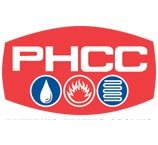Replacement Upgrade Your Sump Pump
Remove the old sump pump.
A sump pump assists in removing water from a wet basement, transforming it into a usable space. According to the Santa Cruz plumbing expert, before you buy a sump pump, first identify the source of the water in your basement. If water seeps into your basement because of a high water table, removing the water with a sump pump is the answer.
To remove the old sump pump, unplug the power cord for the sump pump. If the cord is taped to the discharge pipe, remove the tape, freeing the cord. There should be a rubber coupling with clamps that connects the sump pump to a check valve and to the discharge line. Disconnect the clamps and remove the rubber coupling. Inspect the coupling for damage and replace it if necessary. Lift the old sump pump out of the pit.
Wet basement walls
When water enters the basement through leaking foundation walls, explore options to seal the basement and transport the outside water away from the foundation. Also, check the external perimeter around the foundation. Soil should slope away, carrying surface water into the yard. If not, build up the soil level. It will help direct water away from the basement.
A 1/3-horsepower sump pump will meet the needs of most homes. Consider a 1/2-horsepower pump if a 1/3-horsepower pump will not keep up with the water. Determining the size needed depends on the area of drainage connected to the sump, the depth to groundwater, the basement depth, and other factors. Rather than going through calculations, talk to your local Santa Cruz plumber about which pump best meets your needs.
Assemble the new sump pump.
Determine the placement of the new sump pump and measure the lengths needed for the discharge piping. The sump pump and the discharge fitting are not normally pre-assembled, so you will need to put them together. Follow the manufacturer’s assembly instructions.
Set the sump pump in the pit.
Position the pump so the float is a couple of inches below the floor surface. The sump pump requires a solid base that will withstand water and prevent the pump from moving. Tamp the gravel you place in the hole. If the base is still not solid, stabilize the pump with a small brick or piece of concrete. Do not use wood.
Check that the sump pump is level by using a small torpedo level to make sure the pump housing is level and that the discharge pipe is plumb. According to your most referred Santa Cruz plumbing specialists, If necessary, adjust the discharge pipe and shim the housing with plastic shims. Do not, again, use wood shims.
Connect the discharge line.
Position a rubber coupling on the check valve. Place two hose clamps over the rubber coupling. Slide one clamp over the check valve and tighten. Slide the other clamp over the sump pump discharge pipe and tighten it. If you don’t have a check valve on the discharge line, install one to prevent water from backing up into the sump pump.
Run the power cord along the discharge pipe, fastening it to the pipe with electrician’s tape. Adjust the float to the level recommended by the manufacturer. Plug the pump cord into a nearby GFCI-protected receptacle. Pour a 5-gallon bucket of water into the sump pit to test it.
CAUTION: DON’T DISCHARGE INTO THE SEPTIC SYSTEM
Never discharge a sump pump into a septic system, sewer drain, or floor drain. During wet conditions the septic system drainage field is typically saturated trying to handle the normal flow of wastewater. The discharge from a sump pump can damage the septic system and kill the bacteria necessary to digest the water.
We Take Care of All Your Plumbing Needs.
Request Service
Specials & Discounts
* Call to Redeem or Present this Coupon at the Time of Your Service
Recent Posts





